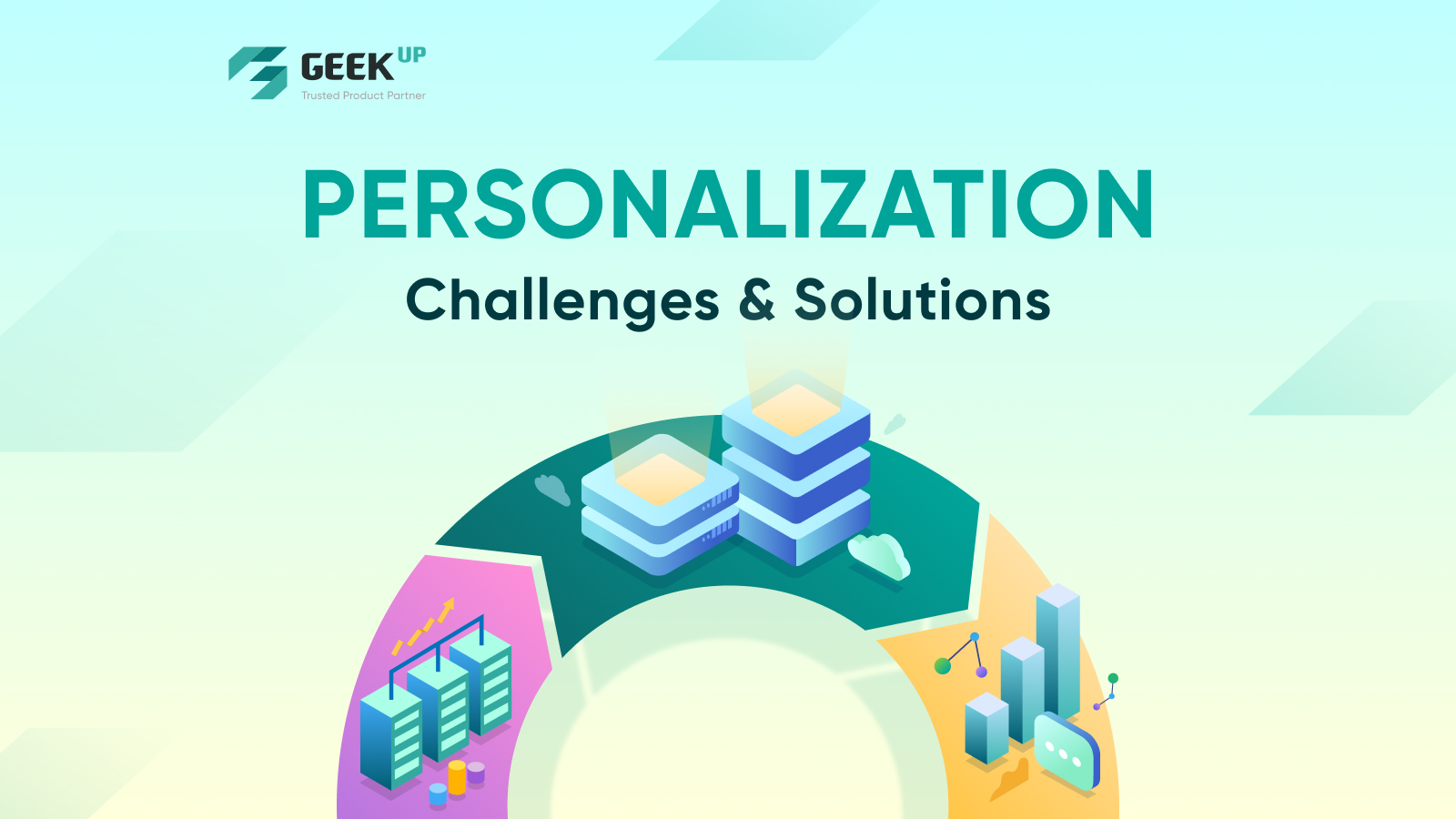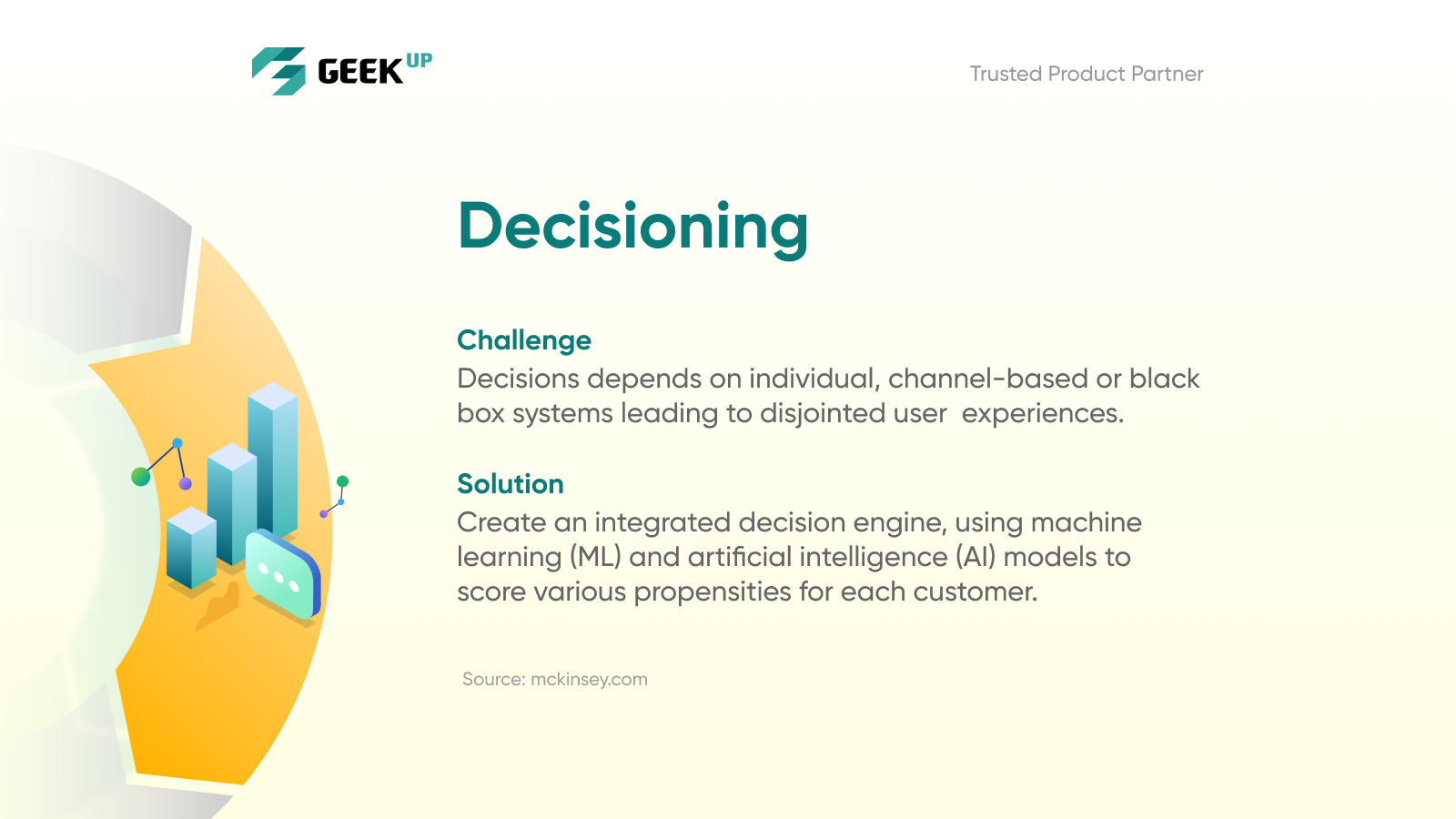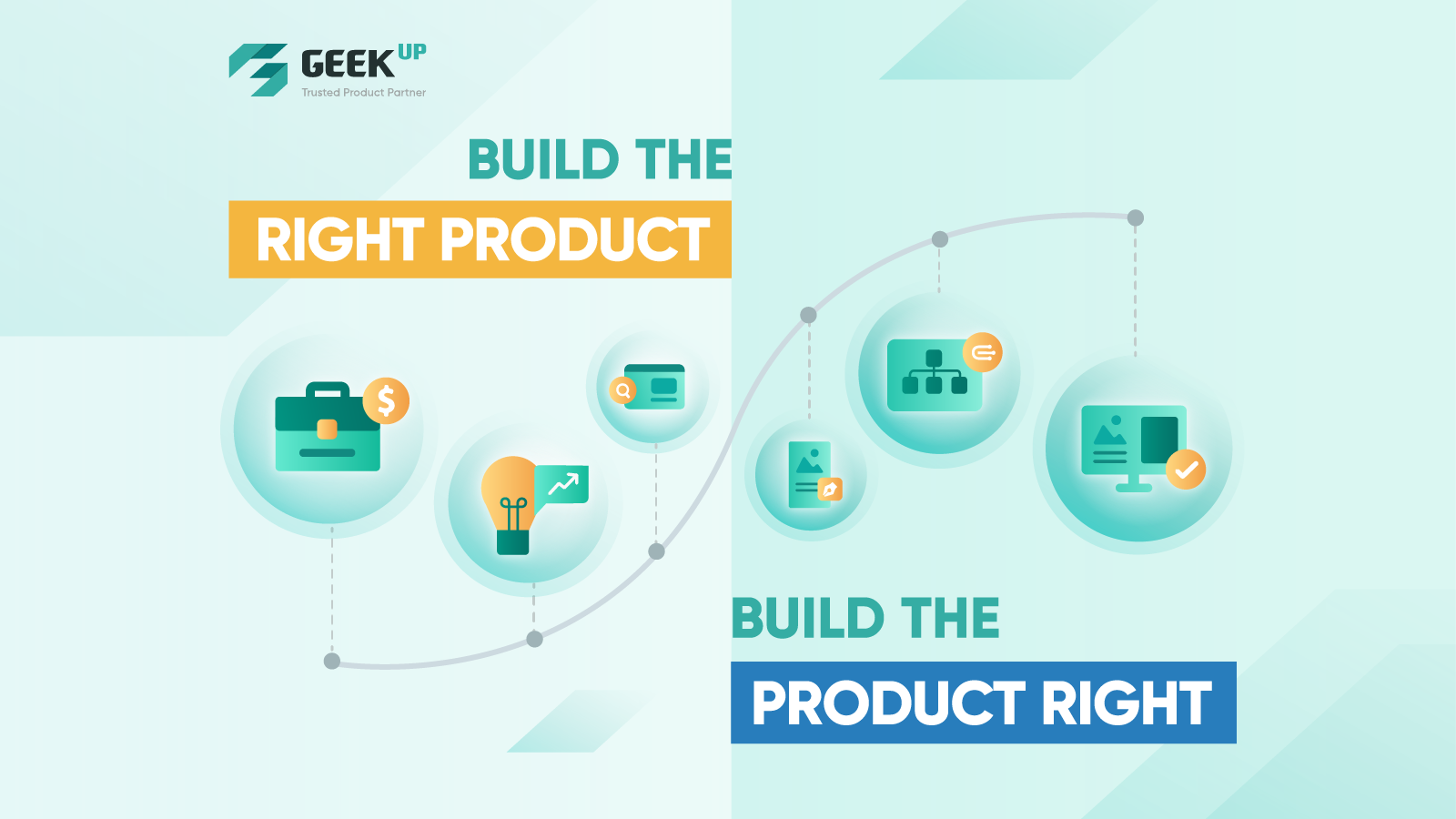ENGINEERING
3 min read
Unlock Business Growth with Personalization: 4 Technology Challenges and How to Beat Them!

According to projections by McKinsey Global Institute, personalization has the potential to create a total value of 1.7-3 trillion USD, of which the Banking industry accounts for 200-450 billion USD, the Insurance industry accounts for 250-600 billion USD while Retail accounted for the highest proportion 450-800 billion USD.
For successful personalization at scale, businesses need to master 4 aspects including Data, Decisioning, Design and Distribution.

1-Data
Instead of being stored in silos usually managed by the IT department, data should always be available for use by relevant departments in real time, supporting interaction with customers on multi channels. This requires 3 critical systems including Customer-data platform (CDP), Data-management platform (DMP) and Identity-resolution platform, as well as the close coordination between IT and Marketing departments for the most optimal use of data.
Key steps in the execution plan to maximize the power of data include composing a detailed list of data use cases and conditions needed to enable them, and determining how and where data will be combined, using the marketing technology (martech) platform using that data and developing a data governance system in the organization.

2-Decisioning
Decisions for recommended solutions that are subjective, black-box or based on fragmented information by separate channels often create a disjointed experience for customers.
To ensure the consistent experience, the team needs to build a set of centralized analytic models in the CDP to score propensity on each individual user, allowing businesses to predict and recommend the most suitable activities for customers. Decisioning engine will ensure a consistent and optimal experience with the support of Machine Learning (ML) and Artificial Intelligence (AI) technologies.
The decisioning engine needs to maintain a balance of a range of compelling marketing rules to ensure that offers and experiences are not conflicting or inconsistent. Increasingly, ML and AI will play an important role in optimizing decisions and finding patterns undetected previously by static models, which are not based on real-time data.
A single platform could rarely serve fully as a centralized decisioning engine. That leads some organizations to build their own systems. This approach has the potential to leave a lot of "technical debt" for tomorrow that will slow down the business operation system.
The marketing department needs to coordinate with the technology colleagues to develop an overall solution architecture that balances between what needs to be built and what to buy. There is always a trade-off between getting results quickly and building a long-term advantage over time.
Read more: Crafting digital products: Choose in-house team, product partners or outsourcing providers?

3-Design
Personalization at scale creates a multitude of approaches to each individual customer, requiring a huge amount of design content. Therefore, the team needs to create the modular content to coordinate and flexibly "assemble" into the templates to serve a variety of communication forms to customers.
Specifically, businesses need to move away from the traditional design process, which mostly creates bespoke content - unique content for certain contexts and requirements, and go forward a "content factory". Content such as videos, emails, banners, images, text, web/app components and even components on non-digital channels need to be broken into modular components to make it easier to "mix" and put in templates for testing.
These modules need to be tagged as well as categorized and stored as a content library inside a digital-asset-management (DAM), allowing the decisioning engine to test different variations to find the most effectives.

4-Distribution
To deliver a fully personalized user experience, the team needed to connect data, decisioning engine and design assets into the platforms that deliver the user experience. From there, businesses can respond immediately to demands from customers as well as exploit potential growth opportunities.
Harnessing the potential of personalization poses numerous challenges that require businesses to apply technology, as well as teams to make quality products. Contact GEEK Up if your business is looking for a reliable partner that provides a comprehensive solution that delivers an optimal user experience.
Referrence: mckinsey.com
0 likes
Get latest updates from GEEK Up
Our email packed with digital product insights, trends and case studies.


